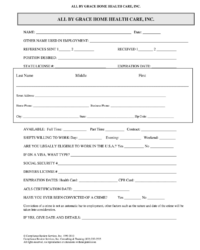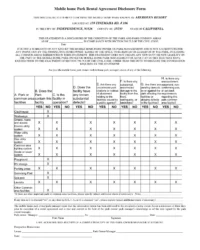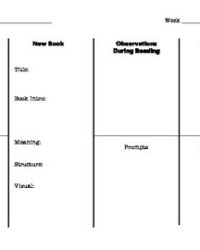Utilizing a formal structure offers significant advantages for both applicants and the residences themselves. It provides a clear and transparent overview of the requirements for admission, helping potential residents understand expectations. For the housing providers, it streamlines the selection process, allowing for objective evaluation of applications and promoting fair and equitable decisions. This, in turn, contributes to building a supportive and stable community dedicated to recovery.
This resource delves into the essential components of these structured forms, offering insights into their design, purpose, and effective utilization in fostering a successful transition into a sober living environment. Key topics include the information typically requested, best practices for completion, and the role these documents play in building a thriving recovery community.
Key Components of a Sober Living Home Application
A comprehensive application for sober living housing typically encompasses several key areas, ensuring thorough assessment and promoting successful community integration.
1. Personal Information: This section gathers basic identifying details such as full legal name, date of birth, contact information, and emergency contact details. Accurate and complete information is essential for maintaining clear communication and ensuring resident safety.
2. Substance Use History: Details regarding the nature of substance use, duration of use, prior treatment experiences, and any relapses are crucial. Honest disclosure in this section allows the residence to provide appropriate support and tailor the recovery environment to individual needs.
3. Recovery Program Involvement: Information about current or past involvement in 12-step programs, therapy, or other recovery support systems provides insight into the applicant’s commitment to sobriety. This also helps determine the level of support required within the sober living environment.
4. Employment and Financial Stability: Questions about current employment status, income sources, and ability to meet financial obligations help assess an applicant’s stability and capacity to contribute to the shared living expenses. This information also helps residents plan for long-term self-sufficiency.
5. Legal and Background Information: Disclosure of any past criminal history or legal proceedings is often required. This information contributes to ensuring the safety and well-being of all residents within the community.
6. Medical and Health Information: Relevant medical history, including any physical or mental health conditions, current medications, and allergies, is necessary to address potential health needs and ensure appropriate accommodations can be made.
7. House Rules and Agreement: Acknowledgment and agreement to abide by the house rules and code of conduct are typically required. This ensures all residents understand and adhere to the community’s guidelines, fostering a respectful and supportive environment.
Gathering these key data points allows sober living homes to make informed decisions about admissions, fostering a stable and supportive environment conducive to long-term recovery. The structured format ensures consistency in the application process and promotes transparency for all prospective residents.
How to Create a Sober Living Home Application Template
Developing a robust application template is crucial for sober living homes to ensure a thorough and consistent resident selection process. A well-designed template facilitates the gathering of essential information while promoting transparency and fairness.
1. Define Clear Objectives: Begin by outlining the specific goals of the application. Determine the essential information needed to assess applicant suitability and compatibility with the community environment. Consider the unique needs and characteristics of the target resident population.
2. Structure the Application Logically: Organize the application into distinct sections with clear headings and subheadings. This ensures easy navigation and allows applicants to provide information in a structured manner. Logical organization also facilitates efficient review by housing staff.
3. Include Essential Information Fields: Incorporate fields for all necessary data points, including personal information, substance use history, recovery program involvement, employment and financial details, legal and background information, medical history, and agreement to house rules.
4. Craft Clear and Concise Questions: Use straightforward language and avoid ambiguity. Ensure questions are easily understandable and elicit the desired information. Consider providing brief instructions or examples to guide applicants.
5. Ensure Legal Compliance: Adhere to all applicable fair housing laws and regulations, including non-discrimination policies. Consult with legal counsel to ensure compliance with local, state, and federal requirements.
6. Design for Accessibility: Format the application for easy readability and accessibility. Consider using large fonts, clear spacing, and accessible formatting for individuals with disabilities. Offer multiple formats, such as online and printable versions.
7. Pilot Test and Refine: Before implementing the template, conduct pilot testing with a small group of applicants to gather feedback and identify any areas for improvement. Refine the template based on feedback to ensure clarity and effectiveness.
8. Regularly Review and Update: Periodically review and update the application template to reflect changes in regulations, best practices, or the specific needs of the sober living home. This ensures the application remains relevant and effective in supporting the admissions process.
A well-structured application, encompassing these key elements, fosters a transparent and efficient admissions process, ultimately contributing to the creation of a supportive and successful sober living environment.
Standardized application materials serve as a critical foundation for sober living homes, enabling informed admissions decisions and fostering stable recovery communities. These structured forms provide a consistent framework for gathering essential information, facilitating objective applicant assessments, and promoting transparency throughout the admissions process. From personal and medical histories to recovery program involvement and adherence to house rules, the comprehensive data collected allows for a thorough understanding of individual needs and promotes the creation of a supportive environment. Effective templates are designed with clarity, accessibility, and legal compliance in mind, reflecting the commitment to fairness and equal opportunity within the recovery housing landscape. Regular review and refinement of these documents ensures they remain relevant and aligned with best practices.
Ultimately, the thoughtful development and utilization of these tools contribute significantly to the long-term success of sober living homes. By facilitating responsible admissions practices and fostering a structured transition into a supportive community, these resources play a vital role in empowering individuals on their path to sustained recovery. Continued focus on refining and improving application processes will further enhance the efficacy of sober living environments and support positive outcomes for residents seeking lasting sobriety.


